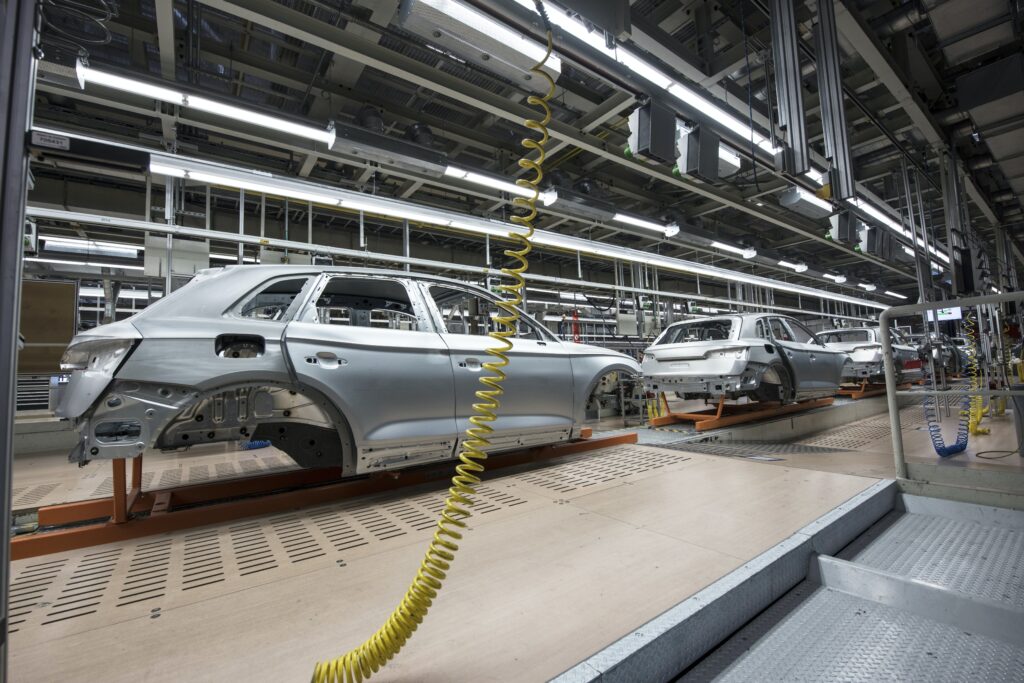You may have heard the term “exhaust silencer” before, but do you truly know what it means? An exhaust silencer is a device attached to a vehicle’s exhaust system that is designed to reduce the noise produced by the engine. It works by using a series of chambers and baffles to absorb and muffle the sound waves generated during the combustion process. In essence, it acts as a buffer between the engine and the outside world, ensuring a quieter ride for you and those around you. So the next time you’re cruising down the road, you can appreciate the role of the exhaust silencer in keeping things peaceful and neighbor-friendly.

Understanding Exhaust Silencer
Definition of Exhaust Silencer
An exhaust silencer, also known as a muffler, is a device that is specifically designed to reduce the noise produced by the exhaust system of an internal combustion engine. It is an integral component of the exhaust system and plays a crucial role in controlling and reducing the noise generated by the engine during the combustion process. The main purpose of an exhaust silencer is to minimize the disruptive and often loud sound emissions produced by the engine, making for a more pleasant and quieter driving experience.
History and development of exhaust silencers
The concept of exhaust silencers can be traced back to the early 19th century when the first internal combustion engines were developed. These engines were known for their noisy operation, which presented a challenge for the automotive industry since noise pollution was becoming a growing concern. In response, inventors and engineers began experimenting with various methods to reduce the noise produced by these engines.
The first exhaust silencers were relatively simple in design, consisting of a series of chambers or baffles that directed and muffled the exhaust gases as they exited the engine. However, these early silencers were not very effective at reducing noise and often caused significant backpressure, leading to a decline in engine performance.
Over the years, advancements in technology and engineering have led to the development of more sophisticated exhaust silencers. Modern silencers incorporate a combination of sound-absorbing materials, resonance chambers, and intricate designs to achieve optimal noise reduction without compromising engine efficiency.
How Exhaust Silencers Work
Processes involved in silencing exhaust sounds
Exhaust silencers operate on the principle of sound attenuation. When the exhaust gases exit the engine, they create high-pressure pulses that rapidly expand and contract. This rapid expansion and contraction result in the production of sound waves, which is what causes the loud noise commonly associated with engine exhaust.
Exhaust silencers work by providing a path for these sound waves to travel through a series of chambers, perforated tubes, or sound-absorbing materials. As the waves pass through these components, they bounce off the walls, lose energy, and undergo phase cancellation. This process reduces the amplitude of the sound waves, thereby reducing the overall noise level emitted by the exhaust system.
Principles underlying exhaust silencer functioning
There are several key principles that underlie the functioning of exhaust silencers:
-
Resonance: Resonance chambers or tubes are strategically designed to reflect certain sound frequencies back into the exhaust flow in reverse phase, effectively canceling out the noise.
-
Absorption: Sound-absorbing materials, such as fiberglass or rock wool, are often used inside the silencer to absorb and dissipate sound energy. These materials effectively convert the sound waves into heat energy.
-
Expansion and contraction: By utilizing various chamber sizes and baffles, exhaust silencers create areas of expansion and contraction, which help to reduce sound wave energy and absorb noise.
Purpose and Significance of Exhaust Silencers
Role of exhaust silencers in reducing noise pollution
One of the primary purposes of exhaust silencers is to minimize noise pollution by reducing the sound intensity produced by the engine’s exhaust system. Excessive noise can be a significant nuisance, both for drivers and surrounding communities. By installing an effective exhaust silencer, the noise level can be significantly reduced, resulting in a quieter and more comfortable driving experience for the occupants of the vehicle, as well as reducing the impact on the environment.
Contribution to vehicle performance
Exhaust silencers not only help reduce noise pollution but also play a vital role in optimizing vehicle performance. A well-designed and properly functioning silencer allows for the efficient flow of exhaust gases, minimizing backpressure. Reduced backpressure ensures that the engine can expel exhaust gases more easily, improving overall engine efficiency and performance.
Furthermore, exhaust silencers can have a positive impact on engine longevity. By reducing pressure and improving the flow of exhaust gases, silencers help reduce the strain on engine components, which in turn can contribute to extended engine life.
Importance for compliance with emission and noise regulations
Another crucial aspect of exhaust silencers is their significance in meeting regulatory requirements. Many countries have stringent regulations governing both noise and emission levels produced by vehicles. Exhaust silencers are specifically engineered to meet these regulations and ensure compliance.
By reducing noise emissions, exhaust silencers help vehicles meet noise regulations, maintaining a harmonious coexistence between vehicles and their surroundings. Additionally, by facilitating better exhaust gas flow and reducing backpressure, silencers contribute to the efficient operation of catalytic converters and other emission control devices.
Different Components of an Exhaust Silencer
Part descriptions and functions
Exhaust silencers consist of several components, each serving a specific purpose in the noise reduction process. Some of the key components include:
-
Inlet Pipe: The inlet pipe is where the exhaust gases enter the silencer from the engine. It directs the exhaust gases into the internal chambers or tubes.
-
Chambers: The silencer typically contains multiple chambers that are strategically designed to allow the sound waves to expand, contract, and interact with the surrounding materials. These chambers play a crucial role in dissipating sound energy.
-
Perforated Tubes: Perforated tubes, also known as resonator tubes, are often used in exhaust silencers. They are designed to reflect certain sound frequencies back into the exhaust flow but in reverse phase, resulting in noise cancellation.
-
Baffles: Baffles are partitions or plates that can redirect or slow down the exhaust gases as they travel through the silencer. They help control the flow of exhaust gases and contribute to the noise reduction process.
-
Sound-Absorbing Materials: Many modern silencers incorporate sound-absorbing materials, such as fiberglass or rock wool, to further reduce noise. These materials absorb and dissipate sound energy by converting it into heat.
How the components work together
The various components of an exhaust silencer work together to achieve effective noise reduction. As the exhaust gases enter the silencer through the inlet pipe, they are directed into the chambers and forced to pass through the perforated tubes and around the baffles.
As the sound waves encounter the perforated tubes, they undergo phase cancellation, effectively reducing their amplitude. The chambers and baffles further contribute to noise reduction by providing areas of expansion and contraction, dissipating sound energy.
Additionally, the sound-absorbing materials inside the silencer help to further dampen the sound waves by absorbing and converting sound energy into heat. The combination of these components working in harmony results in a quieter exhaust system.

Types of Exhaust Silencers
Comparison of different categories of exhaust silencers
Exhaust silencers can be classified into several categories based on their design and intended application. Some common types include:
-
Absorption Silencers: These silencers rely on sound-absorbing materials, such as fiberglass or rock wool, to reduce noise. They absorb sound energy and convert it into heat, effectively reducing the overall noise emissions.
-
Reactive Silencers: Reactive silencers utilize chambers, perforated tubes, and baffles to reflect sound waves back into the exhaust flow, causing phase cancellation and noise reduction.
-
Resonator Silencers: Resonator silencers are designed to target and attenuate specific frequencies. They make use of resonating chambers or tubes to create destructive interference and cancel out noise at certain frequencies.
-
Combination Silencers: Combination silencers combine different techniques and components, such as absorption and resonance, to achieve optimal noise reduction.
Suitable applications for each type
The choice of exhaust silencer depends on various factors, including the type of engine, the desired noise reduction level, and the intended application. Absorption silencers are commonly used in passenger vehicles and light-duty trucks as they offer good overall noise reduction.
Reactive silencers find widespread use in heavy-duty and commercial vehicles since they are effective in reducing low-frequency noise. Resonator silencers are often employed in high-performance vehicles to target specific frequencies and achieve precise noise attenuation. Combination silencers are versatile and can be utilized in a wide range of applications, offering a balanced approach to noise reduction.
Installation of Exhaust Silencers
Typical installation processes
The installation process of an exhaust silencer can vary depending on the vehicle make and model, as well as the specific design of the silencer. However, the following steps generally outline the typical installation process:
-
Prepare the vehicle: Ensure the vehicle is parked on a level surface and the ignition is turned off. Take necessary safety precautions, such as wearing protective gloves and eye goggles.
-
Locate the existing exhaust system: Identify the section of the exhaust system where the silencer will be installed. This is usually the last component in the exhaust system, known as the tailpipe.
-
Remove the existing component: If replacing an existing silencer, carefully disconnect it from the exhaust system by loosening any clamps or bolts. Keep in mind that some silencers might be welded in place and require professional assistance for removal.
-
Fit the new silencer: Position the new silencer in place, ensuring an accurate alignment with the existing exhaust system. Use appropriate clamps or bolts to secure the silencer in position. Double-check for any leaks or loose connections.
-
Test the installation: Start the vehicle and listen for any abnormal noises or signs of leakage. Carefully inspect the installation site for any visible exhaust leaks.
Common challenges and troubleshooting
During the installation process, some common challenges may arise, including difficulty removing the existing silencer, alignment issues, or faulty connection points. If faced with any of these challenges, it is recommended to seek professional assistance or consult the manufacturer’s instructions.
Troubleshooting any installation issues often involves ensuring proper alignment, checking for any loose connections or leaks, and verifying that all components are securely fastened. If necessary, additional adjustments or modifications may be required for a proper fit.
Safety considerations during installation
When installing an exhaust silencer, it is essential to prioritize safety. Always disconnect the battery or ensure the ignition is turned off before starting the installation process. Additionally, wear appropriate protective gear, such as gloves and eye goggles, to prevent any potential injuries.
It is also crucial to work in a well-ventilated area to avoid excessive exposure to exhaust fumes. If working under a vehicle, use proper support and ensure the vehicle is securely elevated to prevent accidents.

Maintenance and Care for Exhaust Silencers
Recommended maintenance routines
Proper maintenance is essential for ensuring the longevity and optimal performance of an exhaust silencer. Here are some recommended maintenance routines:
-
Regular inspections: Periodically inspect the silencer for any visible signs of damage, such as corrosion, rust, or physical deformation. Check for any loose connections or leaks.
-
Cleaning: Clean the exterior of the silencer using a mild cleaning solution and a soft brush. Avoid using abrasive materials or harsh chemicals that could damage the surface.
-
Exhaust system inspections: Occasionally inspect the entire exhaust system, including the silencer, for signs of wear or damage. Look for cracks, holes, or loose components. Address any issues promptly to prevent further damage.
-
Exhaust system flush: Consider performing an exhaust system flush to remove any built-up carbon deposits or residue. This can help maintain optimal exhaust gas flow and prevent potential blockages.
Signs of faulty or worn-out exhaust silencers
It is important to be aware of the signs that indicate a faulty or worn-out exhaust silencer. Some common indicators include:
-
Increased noise levels: If you notice a significant increase in exhaust noise, it may be an indication that the silencer is no longer effectively reducing noise. This could be due to internal damage or deterioration of sound-absorbing materials.
-
Rust or corrosion: Visible signs of rust or corrosion on the silencer may suggest that the protective coating has deteriorated. This can compromise the structural integrity of the silencer and lead to eventual failure.
-
Reduced engine performance: A failing silencer may cause increased backpressure, resulting in reduced engine performance, decreased fuel efficiency, and potential engine overheating.
-
Exhaust leaks: Any visible signs of exhaust leaks, such as soot deposits or a strong smell of exhaust gases, may indicate a damaged silencer or loose connections.
Tips for prolonging the lifespan of exhaust silencers
To prolong the lifespan of an exhaust silencer and ensure its optimal performance, consider the following tips:
-
Regular maintenance: Adhere to the recommended maintenance routines to keep the silencer in top shape. Regular inspections and cleaning will help identify and address any potential issues early on.
-
Avoid extreme conditions: Avoid driving in harsh environments that expose the silencer to excessive moisture, salt, or debris. These conditions can accelerate corrosion and damage.
-
Opt for quality materials: When replacing or upgrading a silencer, choose high-quality materials that are specifically designed for your vehicle. This ensures durability and better performance over time.
-
Avoid aggressive driving: Aggressive driving can put unnecessary strain on the exhaust system, including the silencer. Practice moderate driving habits to minimize stress on the components.
Misconceptions and Myths about Exhaust Silencers
Debunking common misconceptions
There are several misconceptions surrounding exhaust silencers that are worth debunking:
-
Removing the silencer improves performance: While it is true that removing the silencer can slightly improve exhaust flow and increase engine noise, it can also lead to an increase in backpressure and decreased engine performance. Moreover, removing the silencer is often illegal and can result in fines or penalties.
-
Louder equals better performance: Many people believe that a louder exhaust system indicates better performance. However, the noise level does not necessarily correlate with engine power or efficiency. Properly designed exhaust systems, including silencers, are engineered to balance noise reduction with optimal engine performance.
Truths vs myths about exhaust silencer performance and maintenance
It is important to distinguish between truths and myths when it comes to exhaust silencer performance and maintenance. Here are some key points:
-
Performance enhancement: While the primary function of an exhaust silencer is to reduce noise, it can also contribute to improved engine performance by minimizing backpressure and optimizing exhaust gas flow.
-
Impact on fuel efficiency: A well-maintained exhaust silencer has minimal impact on fuel efficiency. In fact, a properly functioning silencer can help improve fuel efficiency by ensuring efficient exhaust gas flow and reducing engine strain.
-
Maintenance requirements: Regular maintenance is crucial for ensuring the performance and longevity of an exhaust silencer. Ignoring maintenance can lead to internal damage, decreased noise reduction, and potential exhaust system failure.
In conclusion, an exhaust silencer is an essential component of the vehicle’s exhaust system, designed to reduce noise pollution and ensure compliance with emission and noise regulations. By understanding how exhaust silencers work, the different components involved, and the maintenance requirements, you can make informed decisions about the installation, care, and selection of the most suitable silencer for your vehicle. Remember, a well-maintained and properly functioning exhaust silencer contributes not only to a quieter driving experience but also to enhanced vehicle performance and longevity.
